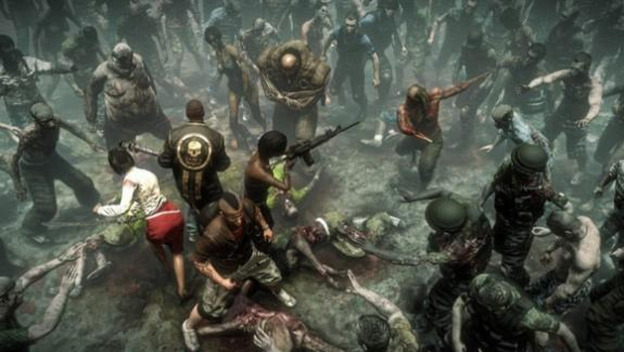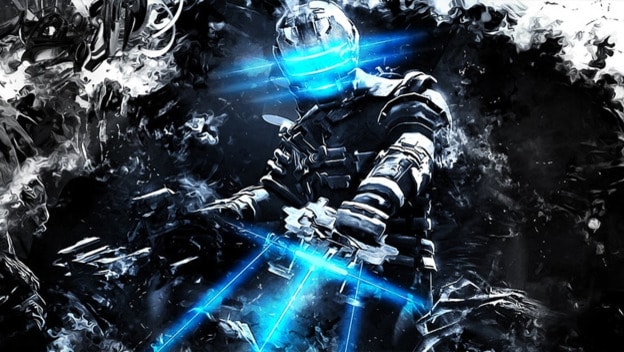Co-op horror, where did you come from? For so long, I’d associated the unique and unsettling thrills of horror gaming with the solitary experience, the adrenaline rush that comes from a sudden, unexpected noise when you know you’re otherwise alone. So much of what we associate with the best in horror comes from isolation, from the realization that there is no one coming to save you, that the trials you are about to face are yours alone, and you’re virtually powerless against them.
Or, at the very least, you’re vulnerable. Maybe you can fight back, but you can easily be swarmed and crushed beneath rotting, undead bodies, consumed by monstrous mandibles, or dragged away into the shadows where terrible things await.
But then Resident Evil 5 happened, and it was fairly successful. Resident Evil 6 followed in its co-op-supporting footsteps. The epidemic eventually reached Dead Space on its third outing, taking what had already been a fairly action-heavy horror franchise and putting it over the top.
And it isn’t to say that these games don’t have their moments that gross you out, make you uncomfortable, or surprise you, but the addition of a second player does a lot to mitigate the oppressive atmosphere that makes the best horror experiences so palm-sweatingly terrifying. Is it a recent phenomenon, after years of single-player Resident Evil titles, Silent Hills, and PC games like Penumbra and Amnesia? A product of a gaming culture with an almost fetishistic focus on multiplayer? I certainly thought so.
Then GOG.com revealed it had received the license to digitally distribute System Shock 2, often held up as one of the greatest science fiction/horror experiences in the history of gaming. It relies on so much of what makes for great interactive horror—the sense of isolation, the feeling that everything and everyone is against you, and, of course, the gross-out factor—and it adamantly refuses to hold your hand. There are decisions to be made on how to proceed, which corners to turn, and you have to make them. That’s another important element of horror: The best of it doesn’t just lead you by the nose. It gives you enough rope to either get yourself out or hang yourself, and leaves you to figure out which you’re doing.
System Shock 2 also has a co-op mode. One that supports up to four players. I knew what I wanted to do: It was time to see if the game’s infamously creepy atmosphere could hold up even with my friend guarding my back and talking into my ear. I recruited my best for it, a fan of Irrational’s later BioShock series, and we jumped in. It wasn’t terribly long before we ran into some technical issues, but we were playing long enough for me to realize that, no, a lot of what makes System Shock 2 unsettling and startling is compromised by having someone to talk to and cover you. That said, it did provide me with enough fuel to theorize that co-op horror is certainly possible.
What System Shock 2 does right is diversification. In Resident Evil 5 and Dead Space 3, both characters in the co-op campaign are fairly indistinct. While they aren’t the same person, their capabilities are almost identical. Even Resident Evil 6, which makes a purposeful distinction in skills between each character in a co-op section, doesn’t take it nearly far enough. System Shock 2 is almost there, allowing players to pick a branch of the military to join at its onset, which then allows you to develop your stats in different ways through various tours of duty. You can build toward tech, combat, or psionics, each of which serves a different purpose in the campaign. Certain sections are going to be much easier for someone who specializes in one path over another, though diversity (since you also control your character’s further development) is certainly possible.

This is important because it forces the players to rely more on each other. While one might be entirely helpless in a given situation, the other can step in and ensure that both survive, but if forces the players to put their lives in one another’s hands. This purposeful imbalance keeps the players from ever feeling too secure in their capabilities as they play, if it’s carried out effectively. While System Shock 2 isn’t quite there, it could easily be fixed by making skill points a scarcer thing for co-op games. It forces players in a multiplayer game to focus themselves even more pointedly on a given skillset.
Which leads into System Shock 2’s greatest failing: separation. It doesn’t do this, and it should. To really drive home the terrible situation the players are in, there need to be moments that force them to approach it alone, or at least afford them enough freedom to lose each other. This would be further enhanced if the game were able to limit the players’ ability to communicate with one another. Dead Space 3, with its co-op specific side missions, could easily have fit in moments like this, and while it would always be possible to surmount purposeful breaks in voice communication with external voice chat, those who are really playing one of these games for the experience are going to subject themselves to everything it can throw at them under optimal conditions (lights off, after midnight, headphones on).
Next, take a page from Eternal Darkness: Sanity’s Requiem. Does the game have a text chat function? System Shock 2 does. Have the computer send erroneous, creepy messages in the other player’s name while the two are separated. When the two players can’t even entirely trust one another, but have to do so anyway if they want to make progress, you’ll know you’ve succeeded at making a co-op horror game. And it’s certainly possible; it just hasn’t been done. Yet.
 | By Shelby Reiches Lead Contributor Date: MAcrh 19, 2013 |
